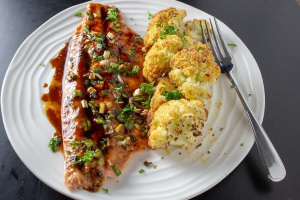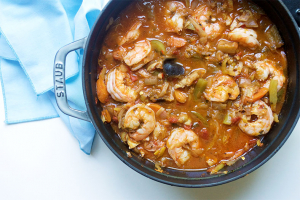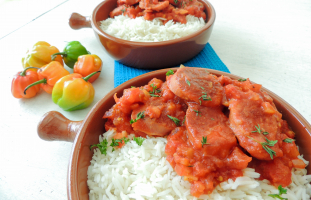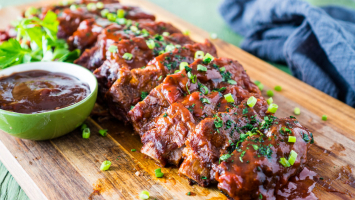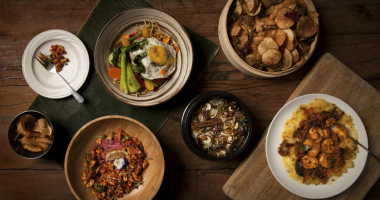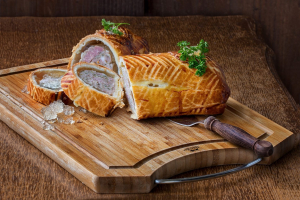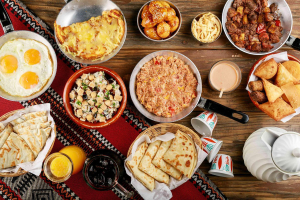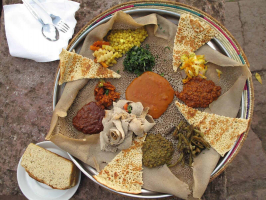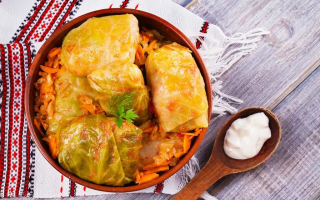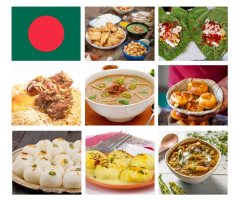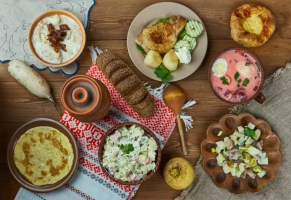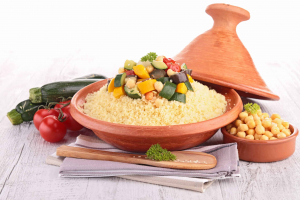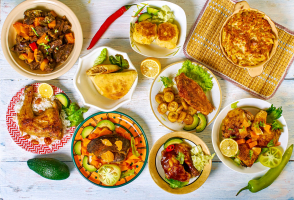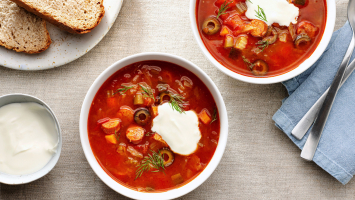Top 10 Best Foods In Andorra With Recipe
Andorran cuisine shares a lot of similarities with its Spanish neighbour, Catalonia, as well as a few with France. As well as the traditional dishes below, a ... read more...lot of mountain game, such as wild boar or hare, is eaten in Andorra, as well as many varieties of wild mushroom. Here is a list of the top 10 best foods in Andorra with recipe.
-
Escudella means "bowl," and it is the name of a large stew-soup served for Christmas in Catalonia, escudella I carn d'olla. The rustic flavor of this stew comes from the bones and feet, whose gelatin adds an unctuousness to the meal, as well as the rough vegetables that were common in the slopes and hills.
Every family will make it a bit differently, perhaps with spaghetti, cabbage, white beans, chickpeas, or other winter vegetables like turnips. The family escudella was not quite as great tasting as this recipe and was most likely eaten from a single bowl because they were too poor to have individual bowls. Escudella, like cocido in Andalusia or ouillade in Roussillon in the French section of Catalonia, is a hearty one-pot dinner. Its preparation in Catalonia is noteworthy enough for Colman Andrews, a keen student of Catalan cuisine, to dub it the ur-Catalan specialty. The eminent Catalan gastronome Joseph Pla once observed that a fine escudella made the traditional way is now worth a lot.
When you taste this escudella, you'll understand why it's a beloved cold-weather dish: it has great, distinctive tastes that are both soul and stomach warming. By the way, all those feet and bones in the stew are needed for a true and full flavor, and while stores are becoming more cognizant of the needs of traditional cooks and may stock them, you will almost certainly need to make a special trip to a butcher.
Ingredients
- 2 chicken feet, skinned or 1 chicken neck, 1 chicken gizzard, 1 lamb foot and ankle, 1 1/3 pounds lamb shank, 1 ham bone (about 2 pounds) or 1/ 4-pound piece ham with its fat, 2 pounds beef or pork marrow (soup) bones, 5 quarts water, 1 slice stale French bread, crust removed, 1 large egg, beaten, 1/2 pound ground pork, 1/2 pound botifarra , casing removed and meat crumbled, 2 garlic cloves, peeled and finely chopped, 1/4 cup finely chopped fresh parsley leaves, Salt and freshly ground black pepper to taste, 1/4 cup fresh bread crumbs, if needed, 1 potato (about 1/ 2 pound), peeled and cut into chunks, 1 carrot, cut up, 1 pound Swiss chard, stems removed and leaves chopped, Flour for dredging, Fideos pasta or rice
Instructions
- In a large pot on the stove, heat some olive oil. Roll the ground pork into meatballs and cook in oil for about 5 minutes.
- Dice the ham, then put the ham, sausage, chicken, and bones into the pot with about 9 cups of water. The entire chicken breast can be placed in the water at once, as it will cook so much that it will easily shred itself.
- Bring the water to a boil, then reduce the heat and let the soup simmer on the stove for two hours.
- Remove the bones and then bring the rest of the liquid back to a boil.
- Add in the rest of the ingredients (chickpeas, white beans, cabbage, prosciutto, peas, potatoes, rice, noodles, salt, pepper, and cumin).
- Cook for another 30 minutes until all of the ingredients are cooked through (including the potatoes and the rice).
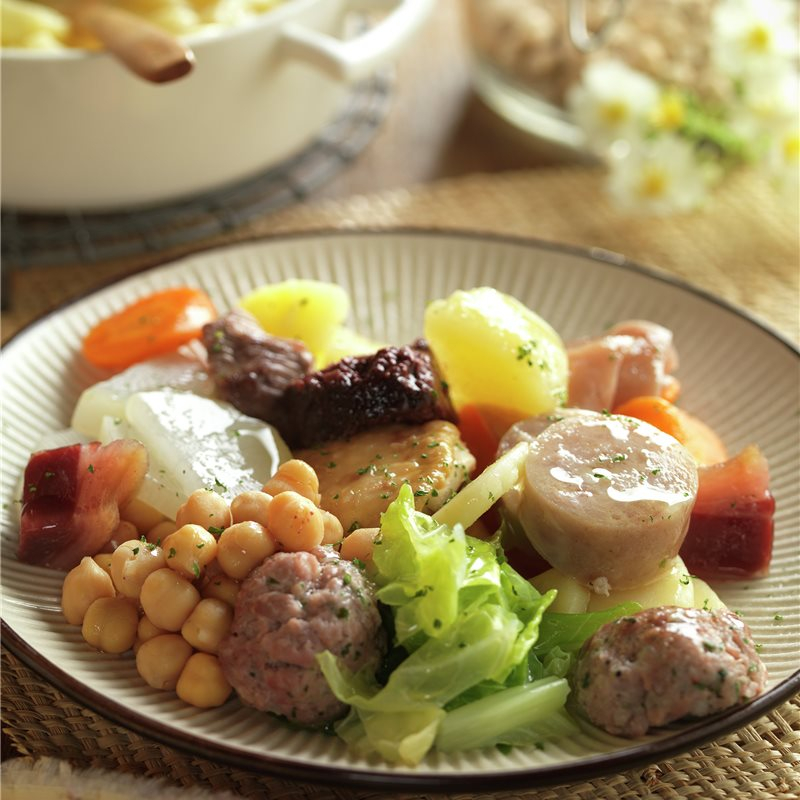
tasteatlas.com 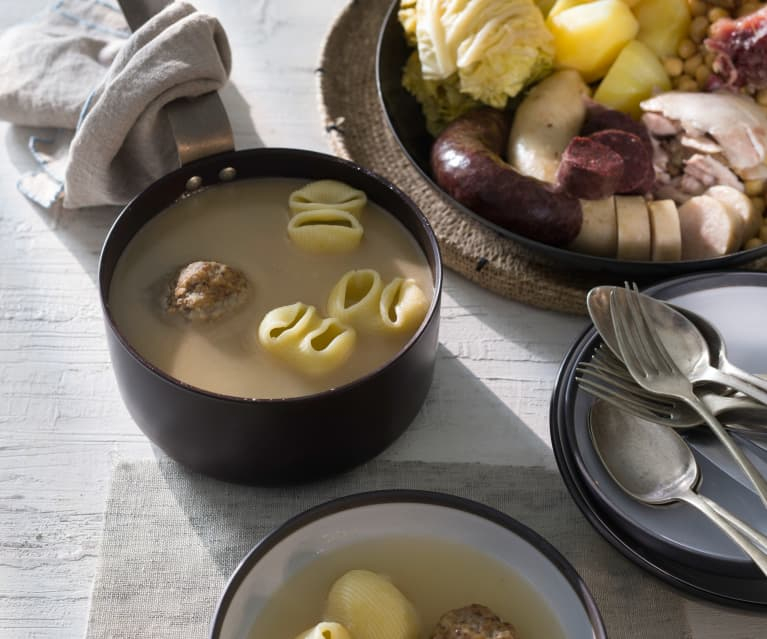
cookpad.com -
Pan with tomate is about as simple as tapas get. It just contains five ingredients (bread, tomato, olive oil, garlic, and salt) and requires almost no actual cooking, yet it's precisely because of its simplicity and restraint that it's such a beautiful end-of-summer dish. This is something you'd serve as an appetizer at a gathering or with a substantial salad for a light meal. It only takes a few minutes and accentuates the quality of your ingredients.
Pan avec tomate is originally Catalan, not Spanish, and is known as pa amb tomàquet (bread with tomato). Catalonia, located in the northeastern region of the Iberian Peninsula, is also known for producing cava and paella. As with a fantastic Caprese salad, the only way to sabotage pan con tomate is to use inferior components (the best tomatoes, olive oil, and bread) or to overthink it. This is one of the few instances where being sluggish is advantageous. The bread is often sliced thin from a long, rustic loaf. If you're providing pan con tomate as a complimentary bar food, this works perfectly. However, for a more substantial component of a meal, they like to use heavier bread on which to pile the tomatoes.
Ingredients
- 2 large, ripe beefsteak tomatoes, Kosher salt, 1 loaf ciabatta, split in half horizontally lengthwise, cut crosswise into 1 1/2-inch slices, Extra-virgin olive oil,divided, 2 medium cloves garlic, split in half, Flaky sea salt, such as Maldon or fleur de sel
Instructions
- Split tomatoes in half horizontally. Place a box grater into a large bowl. Rub cut faces of tomatoes over the large holes of a box grater, using the flattened palm of your hand to move the tomatoes back and forth. The flesh should be grated off, while the skin remains intact in your hand. Discard skin and season tomato pulp with kosher salt to taste.
- Adjust oven rack to 4 inches below broiler and preheat broiler to high. Place bread, cut side up, on a cutting board and brush with some of the olive oil. Season with kosher salt. Place bread, oiled side up, on a rack set in a tray or directly on the broiler rack and broil until crisp and starting to char around the edges, 2 to 3 minutes. Remove bread from oven and rub with the split garlic cloves.
- Spoon tomato mixture over bread. Drizzle with remaining extra-virgin olive oil and season with flaky sea salt. Serve immediately.
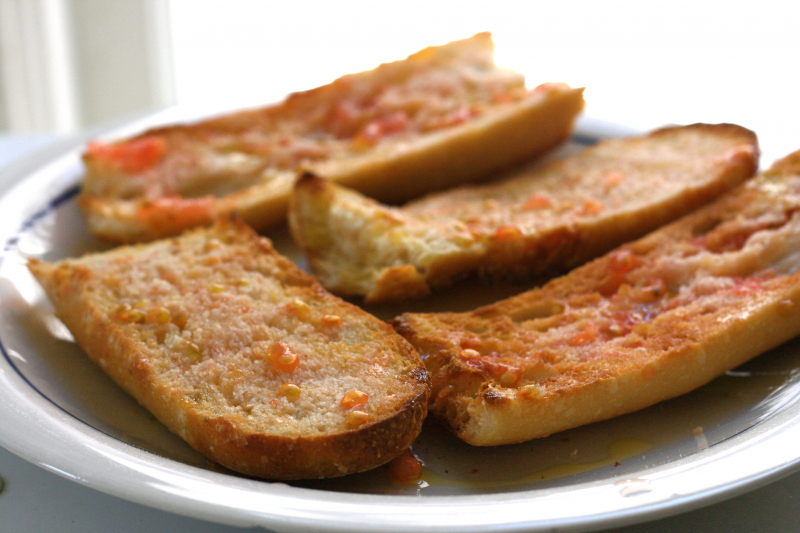
en.wikipedia.org 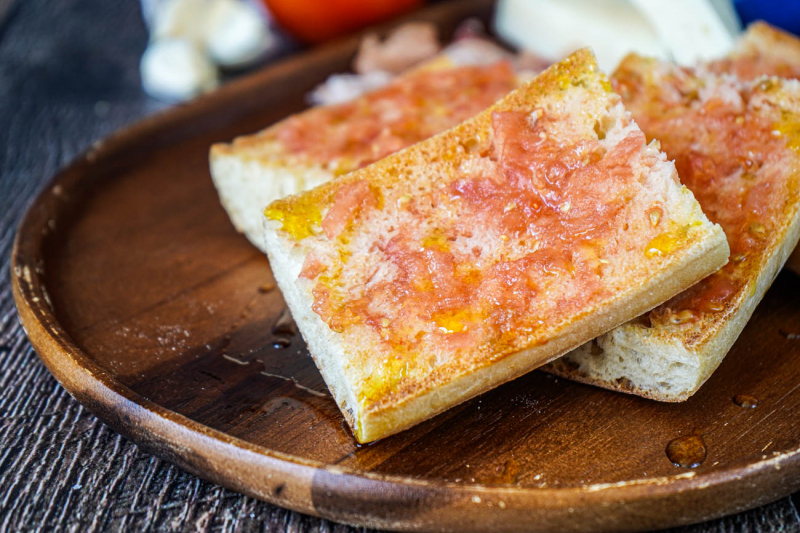
peretarres.org -
According to folklore, a 19th-century Catalan farmer was experimenting in his fields when he discovered a new type of longer, juicier green onion, the calçot. The farmer created much more than a new food when he invented the onion; he also laid the ground for the creation of a unique, particularly Catalan cultural event. Calçots are not something that is hastily prepared and then stored in Tupperware for later consumption at work. Rather, they are part of a traditional winter ritual, the calçotada, which gathers family and friends around the table to devour the onions.
The most common way to prepare calçots is to grill them over an open flame. Rather than completely cleaning the onions, leave some soil on their surface to protect their outer skin. The calçots are grilled directly over the flames until the outside is fully black. (Don't worry; the nicest part - the interior - will still be white and pristine.) They're usually served wrapped in newspaper to keep them warm and eaten off curved terracotta roof tiles. Calçots must be eaten with your fingers; the trick is to grasp them by the green leaves with one hand while pulling off the charred and blackened outer layer of skin with the other. The soft and juicy inner bulb is then dipped in salsa romesco, a Tarragona-style sauce consisting of dried red peppers, nuts (typically hazelnuts and almonds), garlic, vinegar, and olive oil. Finally, the calçot is ready for consumption!
Ingredients
- 2 bunches of scallions, olive oil, salt and pepper to taste, ⅓ cup romesco sauce
Instructions
- Rinse the scallions, cut off the dead and brown greens, chop off the roots, pull off the dirty outer layer from the bulbs, and sprinkle them lightly with salt, pepper, and olive oil in that order.
- Preheat the grill in a 2-zone configuration. Align the grill grates so that you can place the bulbs directly over the hot side, and the greens over the indirect zone, without them falling through. Leave the lid open and stand by the grill, rolling the onions around and letting them char a bit but not blacken too much. The greens should toast nicely, but if they don't get crispy, you can flip the greens over the direct heat for a minute or two.
- Enjoy the grilled calçots with a bowl of romesco sauce for dipping. Wash it down with Catalan wine.
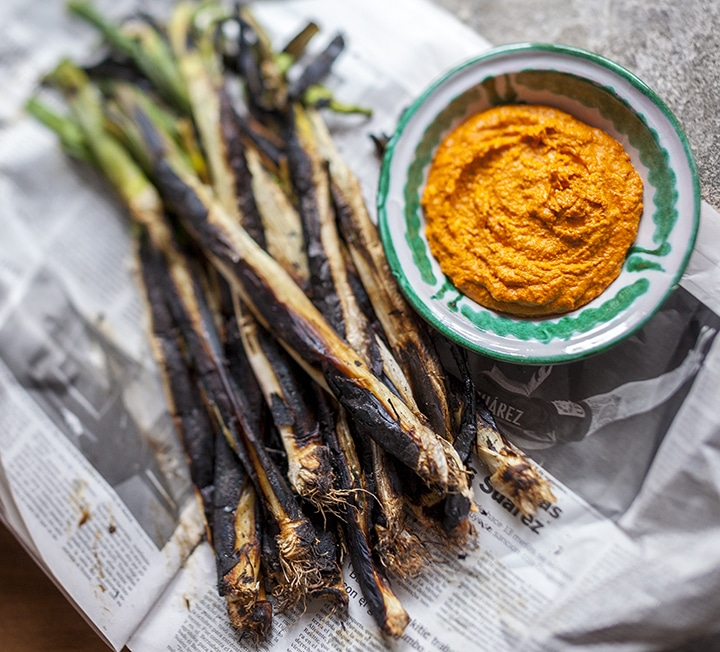
boroughmarket.org.uk 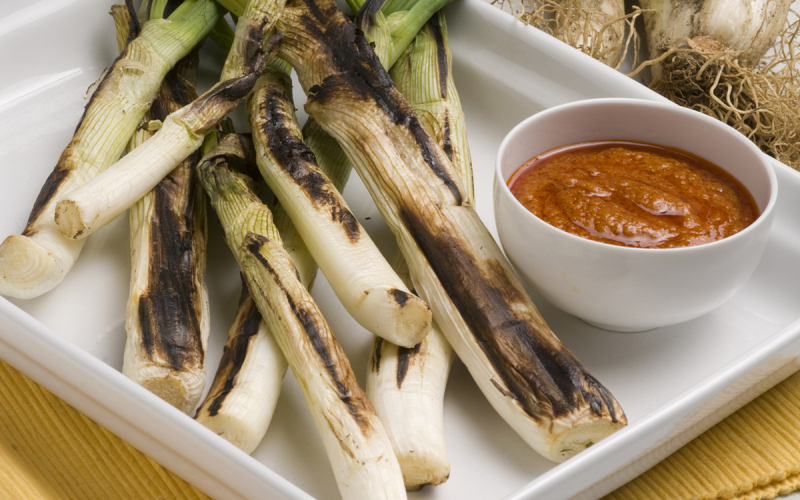
boroughmarket.org.uk -
Trinxat ranks 4th in the list of the best foods in Andorra with recipe. It is without a doubt one of the stars of Pyrenean cuisine. It is particularly popular in Andorra as well as the Alt Urgell and Cerdanya regions, and may be found on the menus of top restaurants. Trinxat, a recipe passed down through generations, is a good example of a cuisine that makes full use of locally sourced, high-quality ingredients. The core concept varies very little, if at all, between recipes found in locations where this meal is popular. However, there may be minor geographical variations or personal touches given by the individual making it.
Trinxat is a good illustration of how a basic dish with straightforward preparation can become a culinary star, as well as how a hearty mountain speciality can give plenty of calories to keep us warm in the winter. 'Lo trinxat' can be found on the menus of numerous restaurants in Andorra, particularly those in bordes (traditional Andorran farm structures) that serve traditional local dishes.
Ingredients
- 1 green cabbage, cored and quartered1 lb potatoes, peeled and quartered (about 3 medium)3 strips bacon, diced4 cloves garlic, minced2 Tbsp minced fresh parsleyolive oilsalt, pepper
Instructions
- In a large pot filled with salted water boil potatoes and cabbage until tender. Drain thoroughly. Return vegetables to pot over low heat and let steam dry some more. Roughly mash the cabbage and potatoes with minced garlic.
- In a large skillet (preferably nonstick), cook bacon over medium until crispy.
- Increase heat to medium high. Add potatoes and cabbage on top of bacon. Press into the pan to make a flat cake.
- Cook until bottom is golden brown. Pass under broiler until top is hot and slightly golden.
- Turn over onto serving platter, bacon side up.
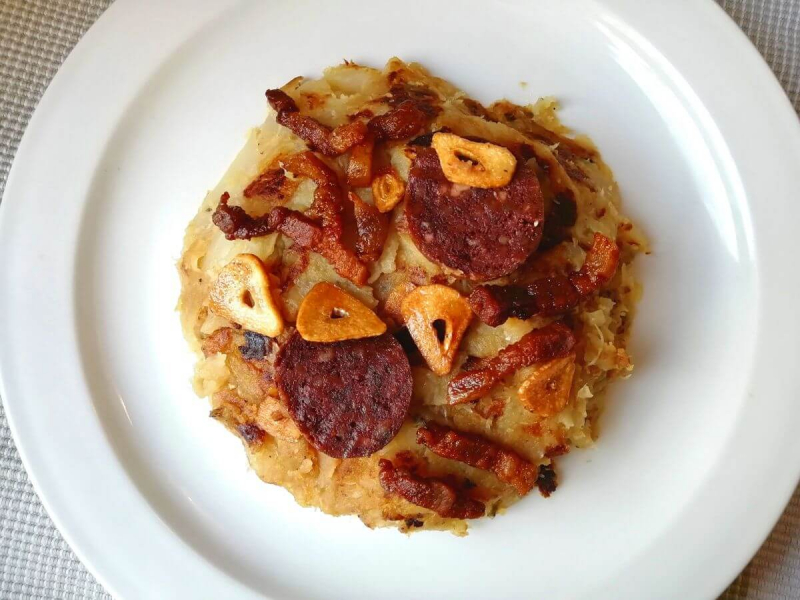
casanoguera.com 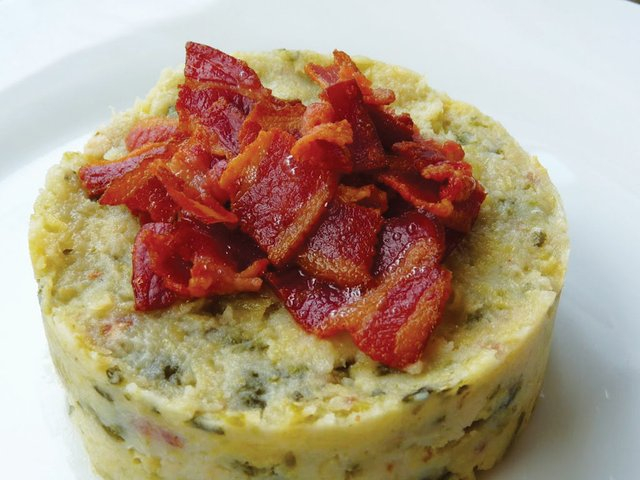
casanoguera.com -
Despite being landlocked, Andorra has many clear rivers teeming with fresh fish. The air at such high altitudes can be extremely beneficial to the respiratory system. Consider the taste of fresh-water trout caught in a beautiful, pure river produced by nature high in the Pyrenees. These sparkling rivers are highly valued and are regulated by the government. While Andorrans consume a lot of beef, they also eat a lot of fish. This explains why Trucha a la Andorrana is a family favorite that is always served in elegance.
It's a straightforward dish comprised of seasoned, grilled fish wrapped in ham. As an accompaniment, an almond sauce is made with parsley, hard cheese, white almonds, and extra virgin olive oil. Trucha a la Navarra comes in a variety of forms, the most basic of which being fried whole fish packed with pieces of jamón serrano. This version is the simplest and should take no more than 15 minutes to create. The end result is a delicious dish made from what is possibly Spain's most versatile fish in terms of the variety of cuisines it appears in.
Ingredients
- 4 fresh rainbow trout cleaned, 2 lemons one sliced in rounds the other in wedges, 8 sprigs of fresh flat leaf parsley, 4 sprigs of fresh savory, 4 few sprigs of fresh oregano, 4 pieces of salt cured bacon, Lemon pepper to taste, Sea salt to taste, Olive oil
Instructions
- Pre-heat the oven to 200°C/400°F/Gas Mark 6.
- Rub the inside of each trout with a piece of garlic. Place two slices of the streaky bacon inside each trout and place on a baking tray that has been greased with butter, drizzle with some olive oil and sprinkle some sea salt and a few turns of black pepper.
- Bake in the oven for 20 minutes until the fish is cooked through – the eyes will have turned white and the flesh will be soft to touch.
- For the almond pesto, place all the ingredients in a food processor and blend until well mixed but the pesto is still coarse.
- Serve the baked trout with a spoonful of the pesto.
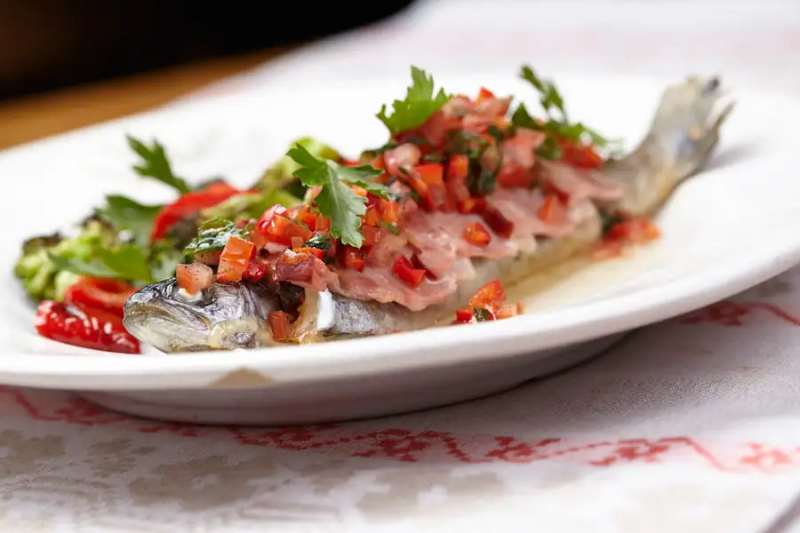
travelaway.me 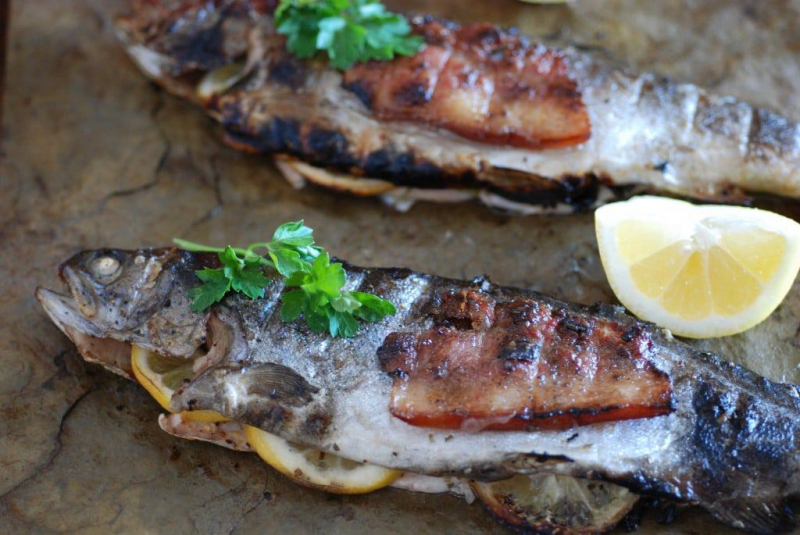
internationalcuisine.com -
Torrijas ranks 6th in the list of the best foods in Andorra with recipe. Torrijas are a traditional Easter treat in Spain during Holy Week, or Semana Santa. Torrijas are similar to French toast in appearance — they are fried slices of stale bread dipped in custard, after all — but there are a few differences that set torrijas apart. For one thing, there's alcohol involved, which is perhaps why this dish is served as a dessert rather than your first meal of the day. But if you prefer it with your morning coffee or a mimosa, that's OK, too.
Torrijas, that delectable delicacy whose recipe has been passed down from generation to generation and continues to this day. The classic recipe has experienced variations in recent years to adapt to new demand and lifestyle; from the original ones with milk or wine to the most current ones with chocolate, custard, or honey. Although it is obvious that she does not know any torrijas, it is likely that due to work, child care, or simply not wanting to spend more time in the kitchen than they should, they do not have the minutes that require their elaborations or even those of a chef.
Ingredients
- 4 large eggs, 1 liter (about a quart) of whole milk, 1 cup of sugar (200g), 2 teaspoons of cinnamon, 3 tablespoons of honey, Extra Virgin Olive Oil (good quality), 1 strip of lemon peel, 1 strip orange peel, 1 teaspoon of cardamom seeds (optional), 1 star anise (optional)
Instructions
- Bring the milk, ½ cup of sugar, lemon and orange peel, and spices (cardamom seeds and star anise) to a slow simmer.
- Cut the bread in thick slices.
- When the milk mixture has been simmering for about 15 minutes, turn off the heat and soak the slices of bread in this mixture. Be careful not to completely wet them to the point that they will break apart, but try to get them to absorb as much milk as possible.
- Let the slices of wet bread rest and cool (some liquid may be lost).
- Beat the eggs in a shallow bowl and dip the bread slices in the egg mixture. In the meantime, heat up about ½ an inch of the olive oil in a deep, heavy pan on medium-high heat.
- Fry the slices two by two, flipping them halfway so that both sides are nice and crisp.
- Let the torrijas rest on paper towels to absorb excess oil. In another bowl mix the remaining sugar (1/2 cup) with the cinnamon.
- Cover the slices in the cinnamon sugar mixture and reserve.
- Finally, make the syrup. Take the remaining cinnamon and sugar from coating the torrijas and add it to a mediumsized pot. Add a bit more sugar to completely cover the bottom of the pot if necessary.
- Add 2 cups of warm water to the sugar and bring it to a boil.
- Add the honey (you can add more or less depending on preference).
- Allow the syrup to simmer for about 30 minutes until it reduces to a syrup-like consistency. It won’t be a very thick syrup, but it shouldn’t be too watery.
- Take the syrup off of the heat and after about 15 minutes spoon it over the French toast. The torrijas should be completely soaked in syrup. Allow them to completely cool before putting them into the refrigerator.
- Refrigerate the torrijas for at least 4 hours, but preferably overnight.
- Enjoy within two or three days for best quality! (I doubt they’ll last that long anyway!)
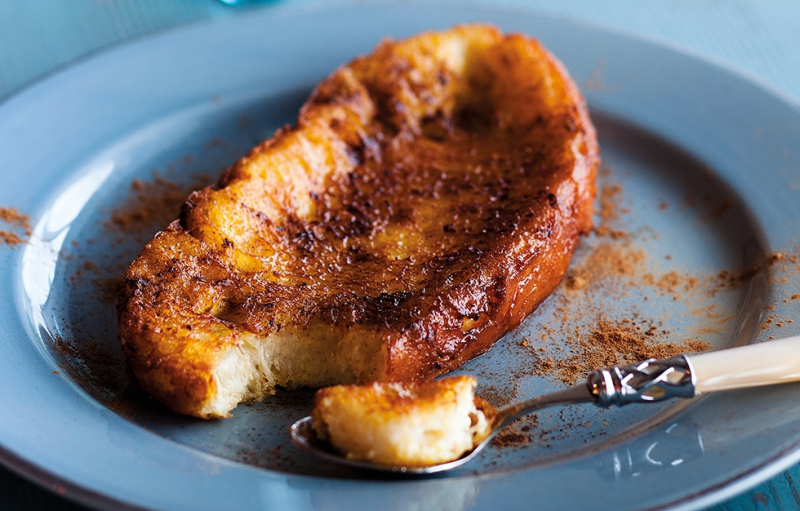
blog.amigofoods.com 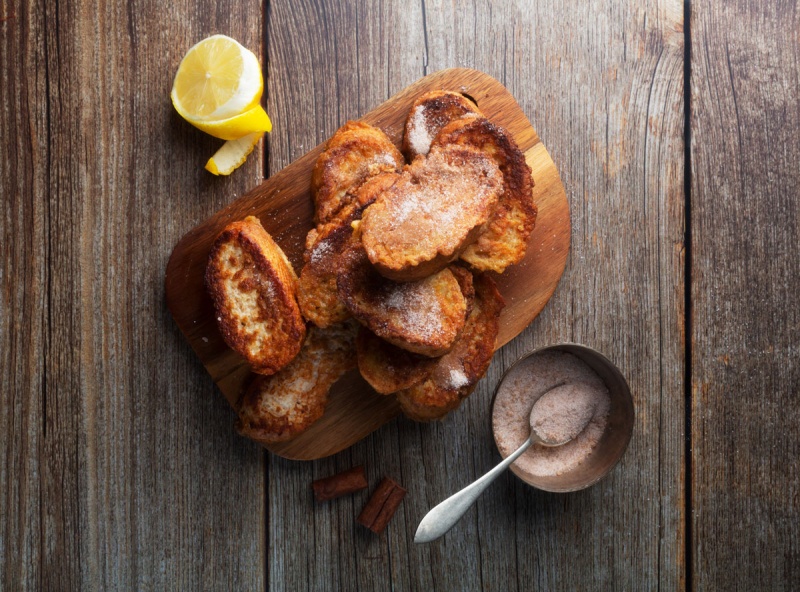
blog.amigofoods.com -
Snails have been a reliable source of protein for thousands of years, particularly during times of scarcity. In Andorra, though, these slimy mollusks were more than simply a back-up; a lunch of snails was considered an excellent feast. Andorra, like its neighbor France, adores snails. They are served in a variety of ways here, the most popular and straightforward being cargols a la llauna (oven-roasted snails), which can be served as a main course or as a shared platter: Slow-roasted with salt, pepper, and olive oil, the snails are served with aioli (garlic mayonnaise) or an olive oil-based vinaigrette with paprika.
Cargols a la llauna amb tomata, in which the snails are roasted in chopped tomatoes, and the sumptuous cargols a la llauna Girona, in which the snails are bathed in a creamy tomato sauce with garlic, bay leaves, and Andorran sausage, are also variations. After a couple of them, you'll be questioning, "Escargot who?"
Ingredients
- 5 - 2 kg of flat snails,2 slices of fatty ham, 300 g of raw sausage, 1 onion, 3 garlic, 1 chilli, 1 Tomato (tomata*),1 handful of thyme, 4 tablespoons of brandy, 2 slices of meat or vegetable broth, Flour, Some laurel leaves, Some Mint leaves, Salt, Pepper
Instructions
- Preheat your oven to 180ºC / 350ºF
- Cover the base of a small ovenproof dish with salt
- Place the snails in the dish, openings up
- Put the snails into the oven for five minutes
- Meanwhile, blend together the parsley and peeled garlic with a splash of olive oil to make a picada
- Spoon the picada over the exposed area of every snail (see video above)
- Return them to the oven for another 5 minutes
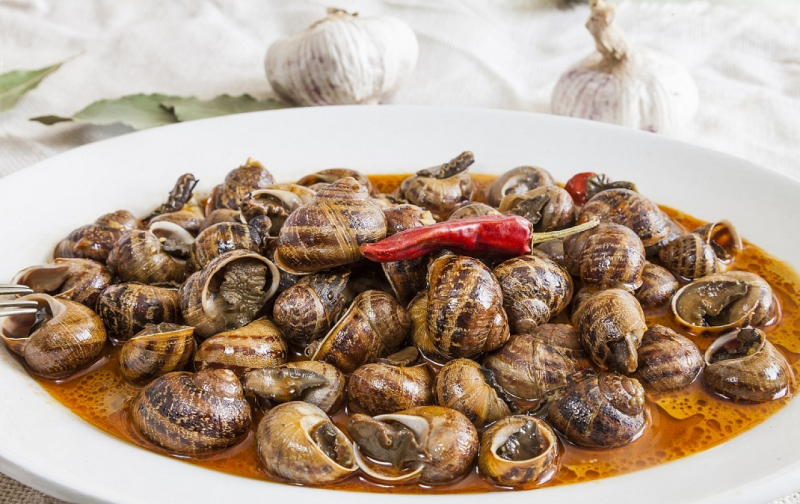
bookandorra.com 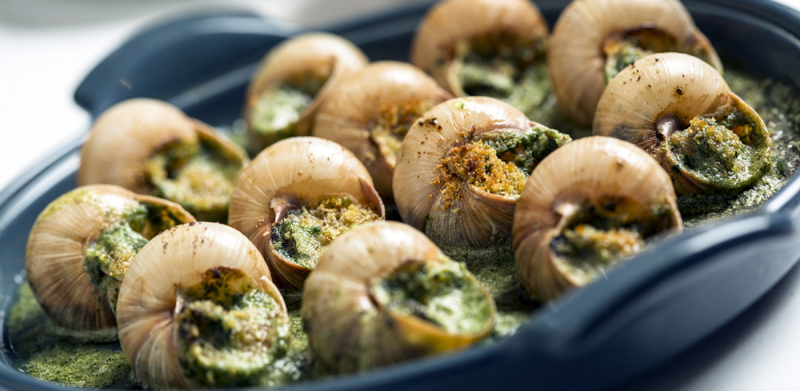
bookandorra.com -
The coca (plural coques) is a sort of pastry that is popular throughout the Mediterranean. Although its exact beginnings are lost through time, it is considered to have originated from dough left over in kneading troughs. Housewives took advantage of the leftover dough by baking it flat and even dusting it with sugar before serving it as a dessert.
Coques come in a variety of shapes and sizes. 'What sticks out is the great range of the varied shapes,' says Eliana Thibaut I Comalada, a true authority on the subject. They are typically classified as either sweet or savory, as well as open (flat) or closed. The great majority of recipes are for sweet and savory open coques. All of these types are produced in Andorra, Catalonia, the Balearic Islands, and Valencia, employing a variety of ingredients such as beef, fish, vegetables, and even cured meats.
Many holidays and celebrations are associated with sweet coques, such as the traditional Andorran coca masegada. Easter, Christmas, Epiphany (the traditional roscón de reyes bread is a type of coca), and, of course, the coca de Sant Joan, which is a staple of summer solstice celebrations. However, in certain nations, such as Italy, coques have no connection to festivals or religious holidays.Ingredients
- Eggs, Flour, Anise, Sugar, Milk, A splash of liquor
Instructions
- Add all the ingredients to a large bowl
- Mix with your hands and kneed for a few minutes until you have an elastic dough
- Put the dough back into the bowl and cover with a warm dishcloth. Leave to rise in a warm place for about an hour.
- Roll out the dough to about a half cm thickness, and poke all over with a fork. Paint with olive oil and place on a cookie sheet covered in parchment paper.
- Bake at 400°F for about 10 minutes, until golden.
- Remove and add your favorite toppings. (If you wish you can put back under the burner for a few minutes to warm the toppings, but it's not necessary).
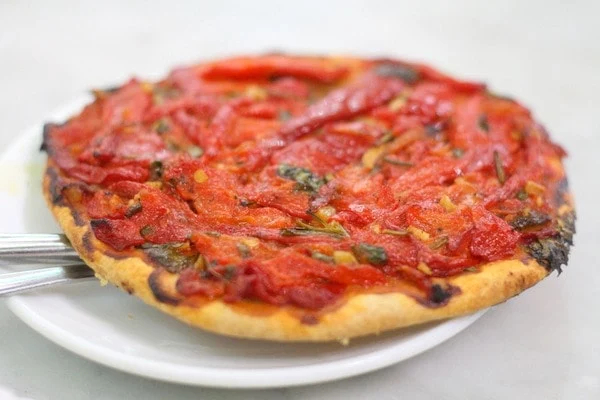
spanishsabores.com 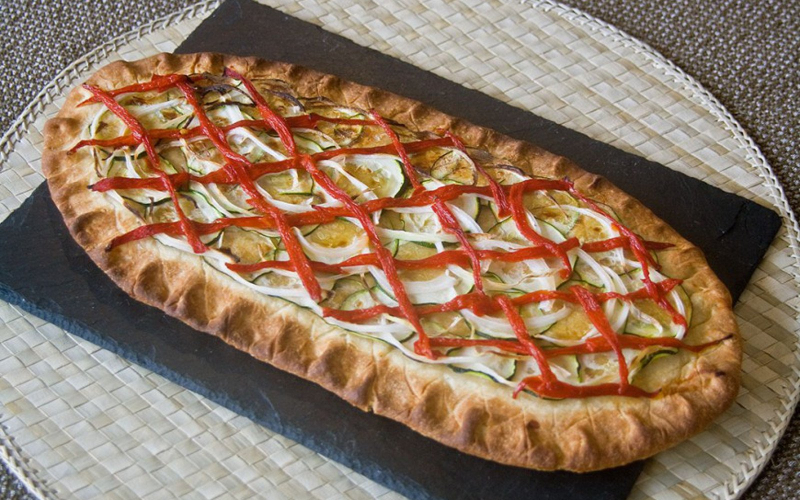
spanishsabores.com -
Because it was formerly a characteristic dessert eaten on March 19, it is popular in Andorra, Catalonia, the Balearic Islands, and Valencia. It is also known as crema cremada or crema de Sant Josep. It can be found in recipes dating back to the Middle Ages. It is still quite popular. In other locations and countries, it is called as "crema catalana" or "crème brûlée." Its popularity has resulted in the development of numerous derivative dishes (liqueurs and ice cream), as well as its use as a filling for cakes and other delicacies.
But, whilst the Catalan and French versions are satisfied with a coating of crispy caramel on top, the Andorrans go for a different, much more decadent version: They put a heaping dollop of fresh, thick double cream on top of the milk-and-egg custard. Then they spread thick drizzles of caramel sauce on top, seeping down into the custard to create a dramatic effect reminiscent of the rugged, snow-capped mountains that surround Andorra itself. This smaller, sweeter, incredibly fulfilling high, like other tremendous peaks, is unmissable.
Ingredients
- 3 Eggs Separated using only the yolks, ½ cup sugar, 2 cups milk, 2 Tablespoons cornstarch, 1/2 lemon zest, ½ cinnamon stick
Instructions
- In a sauce pan, Mix the egg yolks with the sugar to a creamy consistency.
- Add in just 1 ½ cups of milk and stir to thoroughly combine.
- Add in the lemon zest and cinnamon stick.
- Heat the mixture over medium high heat, stirring occasionally
- Meanwhile, dissolve the cornstarch in the remaining ½ cup of milk.
- Start slowly adding in the cornstarch mixture, stirring constantly
- Bring to a slow boil while stirring and right when the first bubble appears, set it aside.
- Ladle the custard into individual ramekins and let cool.
- Sprinkle the top with sugar and Brulee the top with either a blow torch or put in the broiler until the top is scorched.
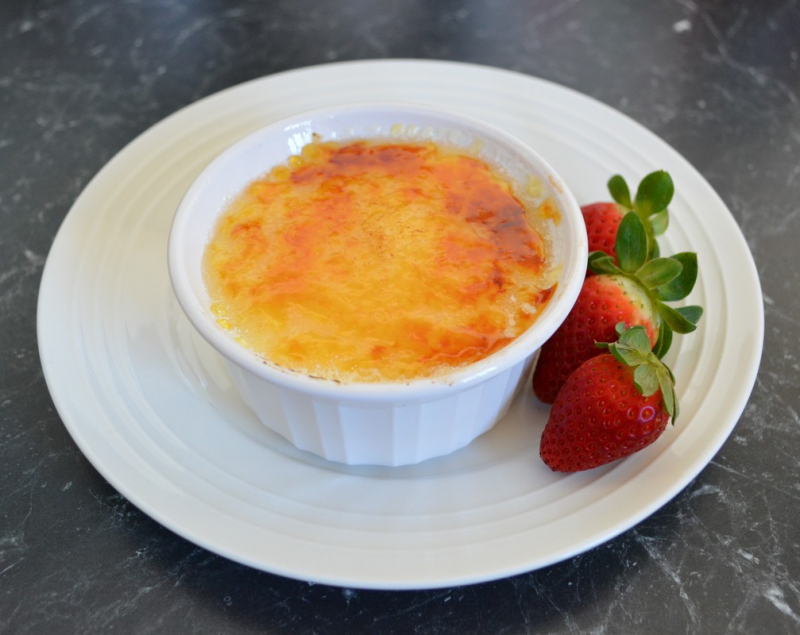
cookthecake.com 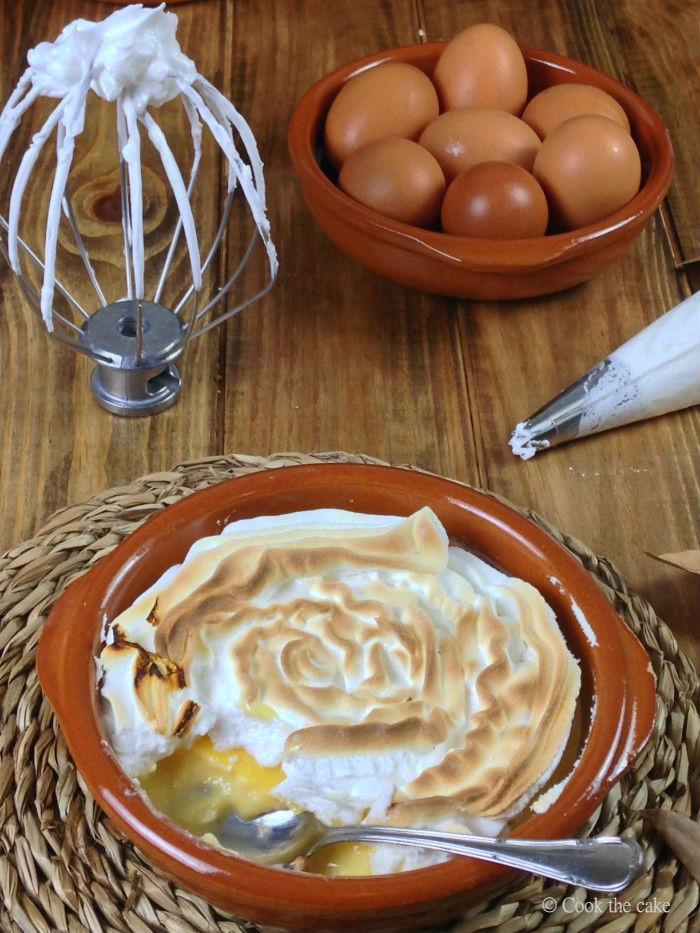
cookthecake.com -
Embutido is a general term for a type of sausage that is popular in Spain, Portugal, the Philippines, and various South American countries. Embutidos are often produced with minced meat mixed with additional spices and ingredients and wrapped in pig's intestines, similar to other European sausages. Andorra embutido is unique; while it contains mince meats and other ingredients, the similarities end there because this meal is wrapped in aluminum foil or any equivalent before being steamed; think of it as a steamed wrapped meatloaf.
They can be found on practically every Andorran table and are consumed all year. Longaniza, donja, bisbe, and morcilla are some of the most common varieties to seek for. In terms of storage, you can freeze embutido and it will last for a month. Make sure that you thaw it by exposing in room temperature for a couple of hours; do not microwave as it will react with the aluminum foil.
Ingredients
- 800g minced pork, 8 pcs Vienna sausages, chipolata or cocktail hotdogs, sliced, 2 boiled small cardaba banana, mashed, 4 tbsp flour, 2 sweet large pickles, chopped, 1 carrots, chopped, 1 small white onion, finely chopped, 1/2 cup raisins, 1/4 cup green peas, 2 eggs, beaten, 4 hard-boiled eggs, cut in half or 16 pcs boiled quail eggs, salt, pepper
Instructions
- In a mixing bowl mix all ingredients together except for the hard boiled eggs and sliced sausages. Mix well.
- Place mixture in an aluminium foil then place eggs and sausages on the middle. Form a cylindrical shaped roll thenwrap it tightly with foil.
- Place it on a steamer then steam for an hour. Remove from steamer and let it cool for 15 minutes, slice with foil on, remove the foil individually then serve as is or shallow fried with ketchup.
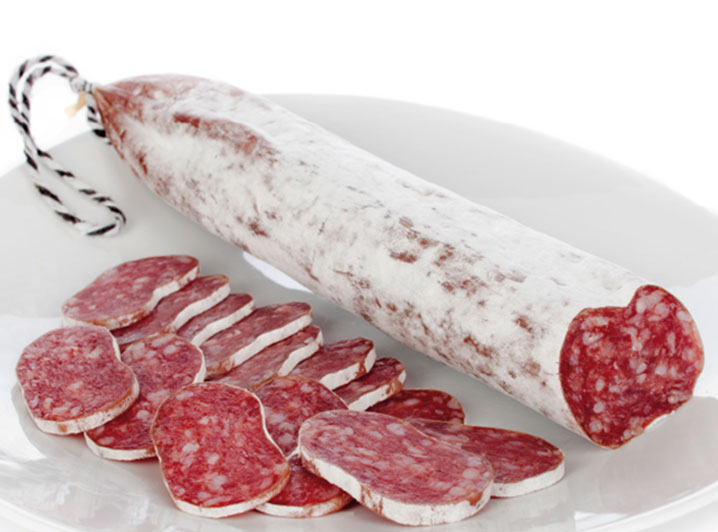
eliasseleccio.com 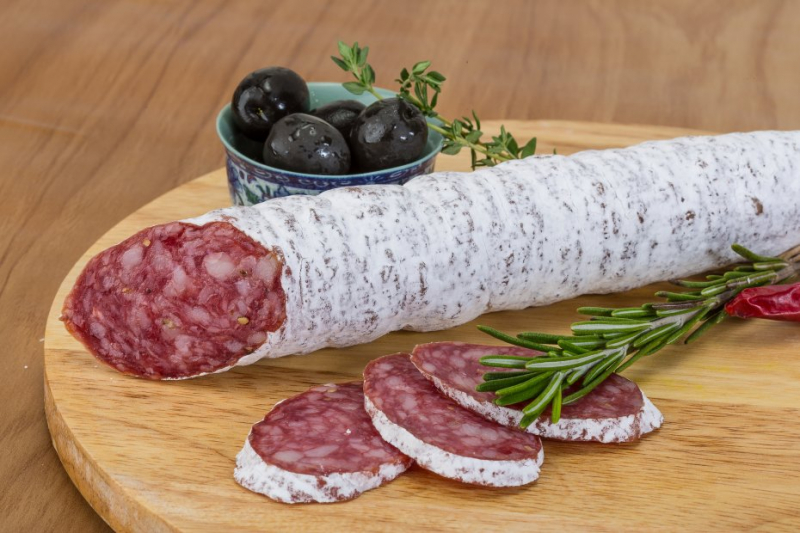
eliasseleccio.com












